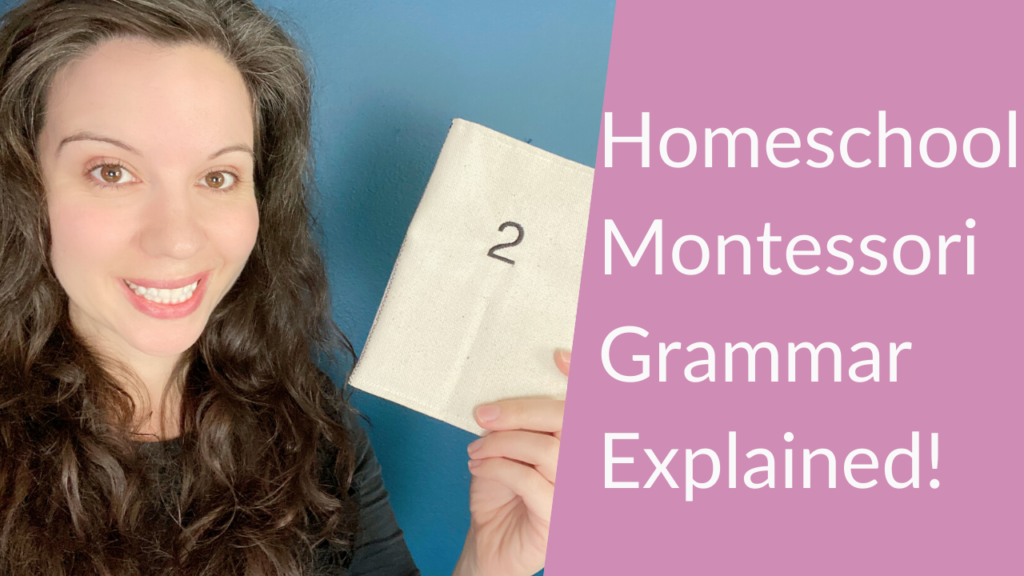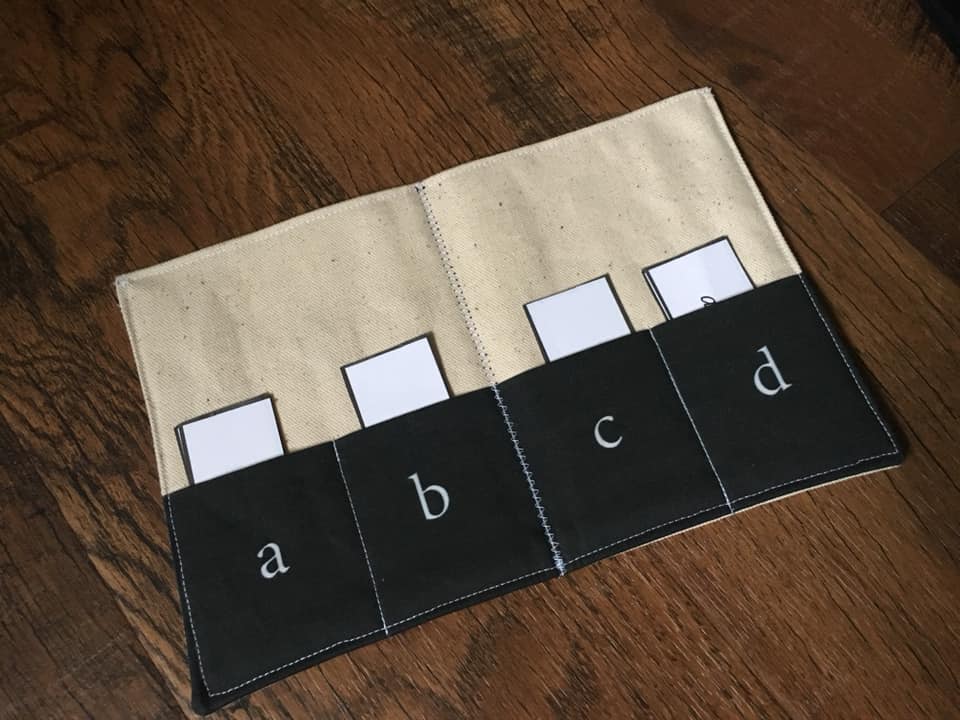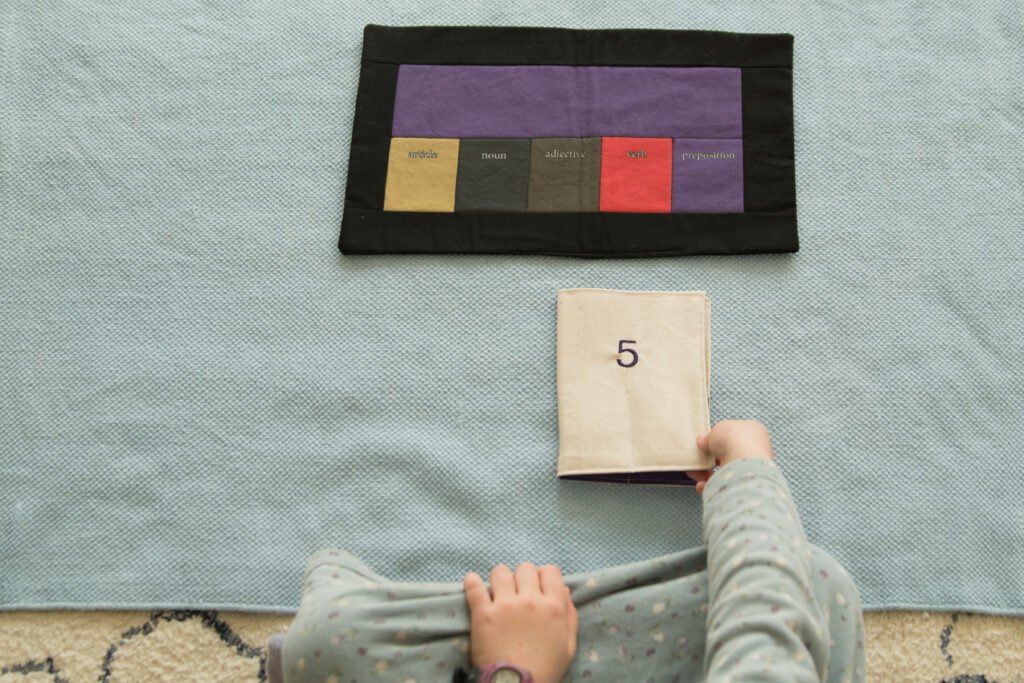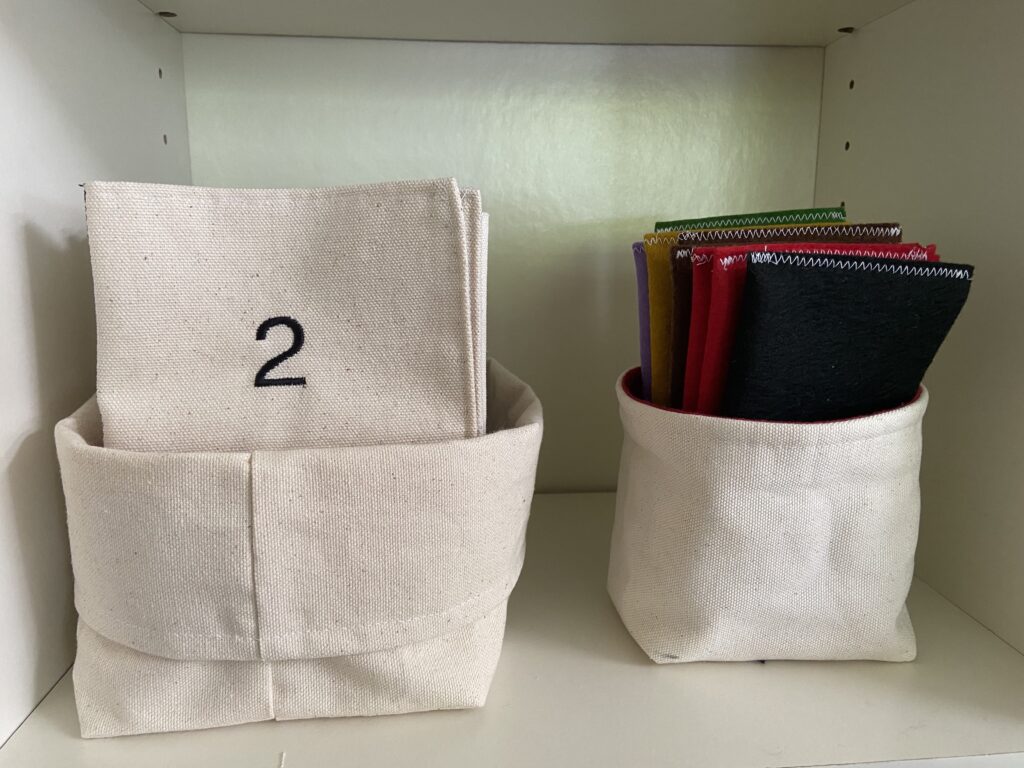When it comes to Montessori Elementary language work, nothing feels quite as overwhelming to homeschooling parents as the Grammar Box Materials! That’s why I am dedicated to showing you that this amazing resource is really not as complicated as it seems! Before you get started with any material for your children ages 6-12, I recommend reading a good theory album like the one from Keys of the Universe. This will give you a good understanding of the method so that you can better decide which materials will best suit your individual children.

This post is long and detailed because I wanted to make sure I explained everything for those who have asked me to! But if you feel too overwhelmed by all this information, head over to YouTube to watch my latest video where I explain these materials in depth, using the version that I created for our home environment. I’ll also be giving you just a quick look at our homeschool space to show you how we display these materials at our house.
Grammar Boxes: What are they exactly?
The Montessori Elementary Grammar Boxes are a series of…well, boxes, which are used to house and sort the Grammar Card Materials. The idea is that once a child has a lesson (often called a Key Experience) to teach a part of speech, the Grammar Boxes are used to give the child more practice with the concept by building phrases or sentences using the parts of speech they have learned. The series begins with box 2, which houses two parts of speech–article and noun. There are three types of boxes in the Grammar Boxes set, so let’s talk about the role of each.
The first are called the Grammar Filling Boxes. These are 36 wooden boxes which are color coded according to the part of speech that the child will focus on. Each box has a progressively more complex set of phrases and sentences and individual word cards, which are used to rebuild the sentences (more about that later).
The set that I make is a little different. Instead of all those wooden boxes, I make 8 organic canvas envelopes, each with an embroidered number on the front, which tells you the number of parts of speech studied in that set. Each Envelope is like a small folder with labeled pockets inside. So for example, instead of 4 wooden boxes for the noun-article set (Box 2), I created one envelope with four pockets. I also make a canvas bin for these to neatly sit inside on your shelf.

The second type are the Sorting Boxes, these are used by the child to sort out the card material when using the materials found in one of the Filling Boxes. There are 8 of these boxes, each one adds a new part of speech. The first Sorting Box has two parts of speech (noun and article) and so it’s commonly called Box 2. There is no Box 1, because if there were, it would be the study of nouns and we can’t make phrases/sentences with only one part of speech.
Instead of large and bulky boxes, I created a set of Grammar Box Mats, which are made with organic cotton. These are just as beautiful as the wooden version, but can be stacked on the shelf, and take up much less space! I also make a printable version of the Grammar Box Mats for those who are on a tight budget.

The third type are the Command Boxes. These boxes are open on the top and hold Command Cards and Exercises, which are fun activities/actions for the child to do to practice each part of speech through commands/actions. In other words, they tell the child to act out a part of speech in some way. There are typically nine of these boxes, one for each part of speech, and two each for the adjectives and verbs.
Instead of wooden boxes, I made Command Box Envelopes. I left these open on the top to mimic the original box design, and used the traditional colors in vibrant organic wool felt. I also make a small canvas bin for these envelopes so that they are easy to display on your shelf. My children LOVE these.

Grammar Card Material: What does it include?
Now that we understand all the boxes, let’s talk about what goes inside of them! Each Filling Box contains a set of phrase/sentence cards AND cards which have the individual words contained in those phrases/sentences. The word cards each have a different color depending on which part of speech they are.
As I said above, after a child has had a Key Experience Lesson (this is a creative introductory lesson) on a part of speech, they use the Grammar Box materials to practice building sentences and phrases using the parts of speech that they know about. As they progress through the series of boxes, the exercises get more complex and include more parts of speech.
Need help teaching the key experience lessons? Check out my grammar tutorials! I show you exactly how I taught them to my children to give you an idea of what might work for yours.
My Grammar Card Material is a little different from the traditional set in two ways.
The first is that although I based the cards on what is included in The Advanced Montessori Method, I modernized the language and changed all the references to Montessori Materials to common objects so that they are useable by everyone–not just fully equipped Montessori schools. So for example, if a Command Card asks a child to do something like move a part of the Pink Tower or Brown Stair, I changed the noun to be something else that everyone will have on hand, like a wooden block.
The second way that my Grammar Card Material is different is that it is not as extensive. I cover all the same topics of study, but there are fewer exercises for each concept. I think you’ll find that you will have plenty of material to work with (even this abridged version is 219 pages), and your children will love the blank forms I included for them to use to make up their own sentences and commands. (These were my children’s favorite part, they loved customizing their set with beloved stuffed animals and other special objects from our home.)
Whether you choose to buy the traditional wooden materials or my fabric set, I hope that this information helps you to feel more confident about teaching grammar to your children at home! If you have questions, please leave me a comment!
